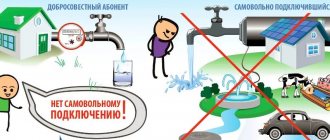A homeowners' association (HOA) is one of the ways to implement the management of housing associations, permitted and regulated by the legislation of the Russian Federation. Despite the fact that the HOA is a non-profit structure, its activities must be subject to accounting rules: accounting and tax.
What are the nuances of accounting operations for HOAs, what kind of transactions are they made out, what are the subtleties of taxation, we will analyze in the article.
How does an HOA keep records of income and expenses ?
Expenses over budget
Both residents and the tax office closely monitor the expenses of the HOA. As a non-profit organization, the partnership receives contributions. The funds are also used to cover expenses that are approved by the main planning and accounting document - the estimate. If the costs do not fit into the estimate, questions arise regarding the organization of the HOA’s work, the distribution of funds, etc.
In an ideal world, it should be like this: there is an estimate, there are expenses for the year, the amounts of planned and actual expenses coincide. But real life is far from ideal. Very often, the HOA accounting department has to deal with expenses beyond the estimate. According to current legislation, any costs not provided for in planning and calculation documents must be agreed upon at the level of the management board of the partnership.
Separately, it is worth noting unforeseen expenses in the form of payments to HOA employees. Usually the corresponding line is in the estimate. If it is not there, the principle is the same: board meeting, agreement on unforeseen expenses.
Reflection of uncoordinated and unreasonable expenses in the annual financial statements is the path to disputes with tenants, tax authorities and showdowns with the prosecutor's office.
Postings when making payments for utilities
Amounts for payment of “utilities” received by the HOA from residents for services provided by third-party organizations do not form taxable income on the simplified tax system, if the partnership then transfers these amounts to suppliers - resource supply organizations, MSW management operators (clause 4, clause 1.1 of Art. 346. 15 Tax Code of the Russian Federation, letter of the Ministry of Finance No. 03-11-06/2/40525 dated June 14, 2018).
If the partnership acts as an intermediary between resource supply companies and homeowners (recipients of utility services), receiving remuneration for this, such remuneration is recognized as taxable income of the HOA. How in this case is the accounting of the HOA carried out using “simplified” – postings:
- Dt 76 Kt 60 – charges have been made for utility services, which consumers - homeowners must pay;
- Dt 76 Kt 90 – the amount of remuneration of the HOA for mediation between resource suppliers and consumers;
- Dt 50 (or 51 for non-cash payments) Kt 76 - funds accepted from apartment owners to pay for utilities and agent fees for the HOA;
- Dt 60 Kt 51 – the debt between the HOA and resource suppliers has been repaid.
Payment for utility services that the partnership provides to the owners independently is fully included in the taxable income of the HOA:
- Dt 62, 76 Kt 90.1 – fees were charged for utilities provided by the partnership;
- Dt 50, 51 Kt 62 – payment for utilities was received from the owners.
One accounting for different forms of activity
To increase income, HOAs often engage in commercial activities. This is not prohibited by law, but it imposes certain obligations on management and accounting. In particular, there is a need to separate accounting and tax accounting.
If business and non-business activities are accounted for together, unnecessary expenses arise. The very first desk check will reveal their presence. The Federal Tax Service will demand an explanation, recalculate and assess additional taxes. You will have to pay dearly for an accountant's mistake.
Tax risks can be minimized. It is enough to competently organize and continuously maintain separate records. It is important to register all the nuances in the accounting policy.
The purpose of creating a homeowners association
An HOA is formed for the effective management of real estate owned by the participants of this association. Owners of housing in apartment buildings most often unite in partnerships, but this is not prohibited for owners of private houses located on neighboring plots.
The HOA is formed for:
- maintaining the property of the owners in proper condition;
- its timely repair;
- creating conditions for comfortable living.
In addition, the partnership is not prohibited from engaging in commercial activities and generating income. This could be small paid repair services for residents of the association, the provision of real estate for rent, advertising, etc.
Lack of tax optimization
Tax optimization begins with the correct choice of taxation system. This is usually the task of an accountant. Novice professionals are confused by HOA plans for commercial activities.
Practice shows that a partnership's commercial income is only a small part of its total income. Accordingly, you should not focus solely on entrepreneurship. Renting space, providing services to homeowners, charging fees for late payments for housing and communal services is not a reason to work for OSNO. The maximum tax burden, along with the business opportunities it provides, is not needed by 99% of HOAs. It is much easier to work on the simplified tax system.
HOAs and domestic taxation
By default, after registration, an HOA, like any organization, is subject to the general taxation system. But she has every right to switch to the simplified tax system, and the majority chooses this option, since in this case accounting activities and reporting will be minimal.
Reporting documents submitted to INFS:
- simplified declaration;
- personal income tax return-2;
- average number of HOA members.
The HOA performs work and provides services to itself, and not to other parties, since its main activity is the maintenance and repair of its own residential premises, this is a direct indicator of the use of the simplified tax system. Funds received from this activity cannot be recognized as income, which means that there are nuances with the assessment of taxes on them.
Let's double-check again: they are not income :
- entrance fees;
- membership fee;
- share contributions;
- donations from philanthropists;
- sponsorship;
- reserves;
- government subsidies.
The following are income and subject to taxation:
- funds received as a result of the commercial activities of the HOA (sales and non-sales - Articles 249 and 250 of the Tax Code of the Russian Federation);
- mandatory payments for the maintenance, current and major repairs of residential property (letter of the Ministry of Finance dated May 5, 2006 No. 03-03-05/8);
- amounts received from anyone other than the founders and members of the organization.
Expenses for tax purposes are expenses that meet the criteria of clause 1 of Art. 252 of the Tax Code of the Russian Federation: economic feasibility and documentary evidence.
IMPORTANT! The source of funds is critical, even for the same purposes. For example, if finances are contributed by the owners of the HOA for major repairs, they are not subject to taxation. If the same finances are contributed by property owners who are not members of the HOA, this will be considered income and included in the tax base.
Like any organization using the simplified tax system, an HOA must choose one of the forms of taxation:
- pay personal income tax on all amounts recognized as income;
- choose the “income minus expenses” scheme.
If you do not choose a simplified taxation system during registration, the HOA will automatically end up on OSNO - the general system, where it is obliged to transfer to the budget all taxes and fees provided for by law and submit the necessary declarations on time. Therefore, you should be very careful when registering.
The main risk of HOA activity
From an accounting point of view, the main trouble that can threaten an HOA is bankruptcy. It occurs if there are not enough reserve funds in the account: since the HOA is a non-profit organization, in the event of unforeseen expenses, there is most often nothing to cover the shortfall. If this happens and it is not possible to save the HOA, bankruptcy may be one of the forms of its liquidation. This difficult decision must be made at a general meeting of HOA members. The law does not provide for any specific features of bankruptcy specifically for HOAs; the procedure is common for all organizations.
Incorrect accounting of utilities
An HOA can account for utility bills in two ways:
1. Payment does not apply to target receipts and is reflected in the account 76.
2. Payment is included in the target receipts and is posted to the account 86.
The current method is indicated in the accounting policy. In the first case, utility payments are classified as transit. Accounting regularly displays the difference between receipts from owners and transfers to resource supply organizations. Receipt balances are recorded as accounts payable. It is credited towards future payments.
HOA and accounting nuances
Accounting includes an analysis of the economic activities of the HOA and the generation of the necessary documentation.
Features of accounting in HOAs
Legally, accounting in an HOA is no different from accounting for any non-profit organization. In practice, there are a number of nuances that should be observed.
- Any reporting implies a certain control period. In HOAs it is usually a year. It is necessary to indicate how the financial condition of the organization has changed over this period of time. The annual report is allowed to the attention of any member of the HOA, since no one has the right to hide the profit of the partnership from its owners.
- In order to correctly plan costs and provide for income for the next period, the accounting department must, based on the results of the previous year, draw up an estimate for the coming year and approve it at the general meeting. This estimate will become the basis for future accounting.
- The estimate must be published (on the HOA website and/or on a federal resource), and then reported on its implementation to the territorial housing inspection (Order of the Ministry of Construction dated December 22, 2014 No. 882/pr).
HOA accounting reporting
As stated by Federal Law No. 402, the financial statements of the Partnership as a non-profit association must include the following documents:
- balance sheet (form 4) – once a quarter;
- a report confirming the intended use of finances – annually;
- applications.
IMPORTANT! If the HOA uses the simplified taxation system (STS), then reporting can be done without accounting applications, limiting itself to the first two points.
Additionally, mandatory information is submitted to the Pension Fund at the place of registration: individual data and form RSV-1.
The main financial document of the HOA, on the basis of which the balance sheet is drawn up, is the estimate of income and expenses, which is compiled annually and approved at the general meeting of the HOA members. Any homeowner can view the financial dynamics report.
Reflection on the balance sheet of obligatory receipts
Payments transferred by HOA members as payment for utilities, entrance fees, and other types of payments accepted by the charter are not recognized as income of the association. They should be taken into account as funds received for targeted financing and reflected on the balance sheet in account 86 “Targeted financing”. A debit can be accounts 50 “Cash” or 51 “Settlement accounts”, operating in correspondence with credit 76 “Settlements with various debtors and creditors”.
Reflection on the balance sheet of subsidies from the budget
The budget can only subsidize targeted funding. Account 86, intended to reflect it, can be supplemented with such subaccounts as:
- 86-1 “Targeted contributions of homeowners”;
- 86-2 “Compensations (subsidies) for housing and utilities”;
- 86-3 “Grants from the local budget”;
- 86-4 “Discounts for preferential categories of the population”;
- 86-5 “Receipts from entrepreneurial (economic activities)”;
- 86-6 “Other targeted income”
Accounting for income from commercial activities of HOAs
An HOA can conduct such activities, as this contributes to the implementation of its goals and objectives (Clause 4, Article 50 of the Civil Code of the Russian Federation). This could be the provision of repair services, performance of various works through the actions of full-time electricians, plumbers and other craftsmen. Accounting for such activities should be kept separately from other types of income and expenses. This will allow you to separate the taxable part of finances and that which is not considered profitable and for this reason is not included in the tax base.
Revenue received from the provision of services and performance of work is income from ordinary activities. To reflect it, the credit of account 91 “Sales” with subaccount 90-1 “Revenue” is intended, corresponding to accounts 62 “Settlements with buyers and customers” or a subaccount to account 76 “Settlements with various debtors and creditors”.
Reflection of HOA costs
The intended use of HOA funds is carried out through account 20 “Main production”, to which sub-accounts are opened for various areas of the main activity, as well as commercial work and services.
Wiring example
Let’s imagine that the HOA has an electrician on its staff, whose work is paid by the piece, and who has replaced the wiring for one of the residents. The materials were purchased by the resident himself. The man paid for the electrician’s work immediately after completion according to the tariffs established by the HOA. Here's what needs to be shown on the balance sheet:
- debit 50, credit 62 - receiving payment from the tenant - customer;
- debit 62, credit 90-1 – recognition of funds received as income;
- debit 90-3, credit 68 – VAT accrual on the cost of work performed;
- debit 20-2, credit 70 – calculation of piecework wages for a full-time electrician;
- debit 20-2, credit 69 – calculation of insurance premiums for the amount of labor remuneration;
- debit 90-2, credit 20-2 – write-off of the cost of work performed;
- debit 90-9, credit 99 - reflection of the financial result - profit.
In addition to the listed operations, the HOA’s balance sheet will reflect the costs of repairing common residential property and accounting for the organization’s fixed assets.
Payment of remuneration without taking into account insurance premiums
We are talking about remuneration for members of the HOA board. On the one hand, they perform certain labor functions, acting in the interests of the partnership. This means that the remuneration is equal to wages and is subject to insurance contributions.
On the other hand, remuneration does not depend on the conditions of the work performed, its quality or quantity. Such criteria are established only for salaries. This means that when paying remuneration, insurance premiums can not be counted.
Judicial practice on this issue is sufficient, but contradictory. The Ministry of Finance is preparing to dot the i’s by preparing amendments to Art. 420 Tax Code of the Russian Federation. In the meantime, it is still better to tax remuneration with insurance premiums than not to tax it.
Declaration
The declaration of a homeowners' association in simplified form has a certain form. The document itself is divided into five sections.
- Title page.
- Advance payments at a rate of 6%.
- Payments at a rate of 15%.
- Calculation of the amount of income.
- Calculation of the amount of income minus expenses.
- Targeted use of funds.
- The title page states:
- name of company;
- organizational and legal form;
- adjustment numbers;
- tax and reporting period;
- tax service code;
- type of economic activity;
- forms of reorganization;
- and of course, contacts where you can contact representatives of the partnership.
- In the intended use section:
- you need to indicate codes for contributions for the maintenance of property (read about what the property and funds of the HOA consist of, where membership fees go, read here);
- the annual amount of income for the balance of funds is indicated;
- The annual amount of expenses is reflected, as well as the balance that exists at the moment.
- The income-expenses sections indicate all transactions that were carried out by the homeowners association for the specified time period.
We do not recommend completing the documents yourself. Save time - contact our lawyers by phone:
8 (800) 302-76-94
In order for the declaration to be drawn up correctly and immediately accepted for consideration by the tax authority, it is simply necessary that it be drawn up on the appropriate form, which can be easily found on the Internet.
HOA reporting plays a decisive role. By not drawing it up on time or properly, the chairman risks not only his position, but also the closure of the partnership. Therefore, an accountant in a homeowners’ association is a necessary position, and the deadline for submitting the necessary documents to the Tax Inspectorate should be controlled by the chairman himself.
Neglect of information
The algorithm for making decisions and concluding agreements on their basis in HOAs may be different. Here's a simple example. The board at the meeting sets a certain limit on the amount of the contract. Agreements within the limit are signed by the chairman without the consent of the board. If the limit is exceeded, a collegial decision is made.
What does accounting have to do with it? It is important for an accountant to know about the presence of limits, restrictions and the decision-making algorithm, so as not to miss an inconsistent agreement and not carry out a transaction based on the basis.
Who is responsible?
The homeowners association is registered as a legal entity . This means that the legal entity’s staff must have a position that includes the responsibilities of an accountant. Such an employee is responsible for maintaining records and timely providing data to the Tax Inspectorate, statistics and various funds.
But in addition to the accountant, responsibility for accounting rests with the chairman, who appoints this employee to the position and also controls his activities. Thus, joint liability arises among all employees of the HOA who are associated with administrative management.
Incorrect accounting of fixed assets
Fixed assets in an HOA are often purchased through dues. In this case, the property is considered as common property. When reflecting it in accounting, the accountant must show the use of targeted financing. Typically three entries are made:
Dt08 Kt60
Dt01 Kt08
Dt86 Kt83
It would be a mistake to charge depreciation on fixed assets that are common property. According to accounting standards, depreciation should be charged for such fixed assets. It should be reflected on the account 010.
The disposal of fixed assets is recorded in accounting by posting Dt83(86) Kt01.
Reporting
The homeowners association undertakes to maintain accounting records and prepare reports. This is stipulated by various regulations. There are two types of reporting:
- annual and interim reporting;
- The annual reporting of the HOA consists of a balance sheet, as well as a report on the intended use of funds and applications.
A mandatory appendix to the balance sheet is a report on changes in the capital of the homeowners’ association, as well as a report on how funds flow through the account. Explanations are attached, which were compiled in the form of a table or continuous text. This is evidenced by paragraph 2, 4 of the order of the Ministry of Finance of Russia dated July 2, 2010, number 66n.
It turns out that the annual financial statements include the following elements:
- Balance sheet.
- Statement of changes in equity.
- Explanations for the balance sheet.
- Reports on how cash flows.
- Report on the correct use of targeted funds.
As for interim reporting, it represents only a balance sheet that is submitted for review.
Balance
The HOA balance sheet is a type of reporting that is prepared in a certain form within a specific period. The balance sheet is prepared in the prescribed form. As a rule, these are two columns. The name of the article is indicated on the left, and the monetary amount that corresponds to it is indicated on the right.
- The balance sheet indicates the balance at the time of drawing up the document.
- Income is described.
- Its total amount is indicated, as well as individual items. For example, contributions for the maintenance of common areas.
- Sponsorship help.
- The total amount of expense is indicated.
- Below are the items where the funds were spent.
- These are bank services, accountant's salary, chairman's salary, garbage collection, maintenance, crimping, legal costs, payment to material suppliers, and so on.
- The balance that remains after all transactions of income and expenses is indicated below.
- The HOA seal must be placed under the balance sheet, and the chairman’s signature is also inserted.
There may be fewer or more items of income and expenses depending on the business activities of the partnership.
We do not recommend completing the documents yourself. Save time - contact our lawyers by phone:
8 (800) 302-76-94
Filling
Let's consider an example of the balance sheet of the Zvezdny HOA for 2021.
January 1, 2021 RUB 127,000
Income 500,000 rub.
- Contributions for the maintenance of public areas RUB 260,600.
- Contributions for major repairs RUB 2,390,000.
Expenses:
- Bank services 3000 rub.
- Garbage collection and maintenance RUB 23,000.
- The chairman's salary is 36,000 rubles.
- Accountant's salary is 27,000 rubles.
- Electricity payments RUB 235,000.
- Crimping 5000 rub.
- Current expenses 9000 rub.
- Installation and maintenance of meters RUB 44,000.
- Repair work and maintenance of individual entrepreneur Vasnetsov 24,000 rubles.
The balance as of January 1, 2021 is RUB 150,000.
It is recommended to indicate income and expenses separately on the balance sheet . Under the simplified tax system, the income minus expenses form is also acceptable, however, during an inspection, the cash flow is less visible in it, which creates additional questions for various inspection authorities.
Using accounts
Funds for the maintenance of apartment buildings are transferred to bank accounts, from where they are subsequently spent in accordance with their intended purpose. It is important for each payer to understand what the account is, what it means and whether the money really goes for business needs and is not spent on the personal whims of the board.
Facial
The personal account has nothing to do with bank payments. This is an individual payer number that allows you to identify who the money came from. Using a personal account, the owner pays off the charges for his apartment. For HOAs, this allows you to track which of the owners made the payment and who is listed as a debtor.
The personal account number is indicated on the housing payment receipt. It can be found directly from the HOA board, on the State Services website, and even on the Sberbank website, if the owner is a client of a financial organization.
Special
A special account is opened by the partnership to form a reserve fund for the overhaul of the apartment building. In accordance with Article 175 of the Housing Code of the Russian Federation, there can be only one special account, which allows all apartment owners to track the receipt of funds there.
The choice of bank to open a special account is made at a collective meeting of residents. They receive all information about the account number, which eliminates misuse by individual management persons.
No collections are made from the special account to repay the resulting debts. The accumulated funds remain untouched even when the HOA is dissolved.
Calculated
All contributions, except for major repairs, are transferred to the current account. It opens when the partnership is formed and exists until the organization is dissolved. The current account number is indicated on payments. It can also be found directly in the HOA or on the State Services website. When paying, the money is credited to the specified account.
You can check whether the money is being credited to the right account by requesting the relevant data from the HOA board.
What does the property and funds of a partnership consist of according to the law?
The funds of the HOA are considered to be:
- payments received from members of the partnership;
- business income;
- government subsidies, etc.
The property of the HOA is divided into property of members of the organization and common property. Common property includes:
- entrances;
- utility rooms;
- outbuildings;
- elevators;
- basements;
- attics;
- adjacent land area.
The HOA owns not only real estate, but also movable property, which also belongs to all members of the organization. For example, metering meters, household equipment and much more.









